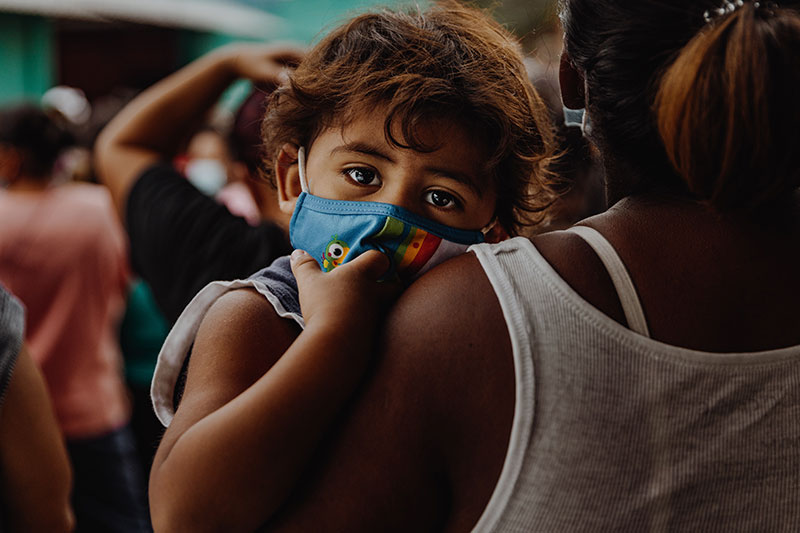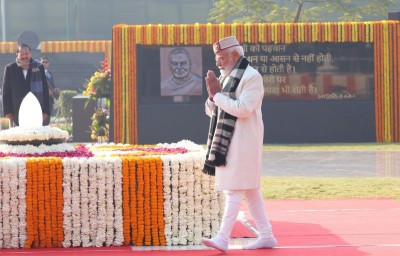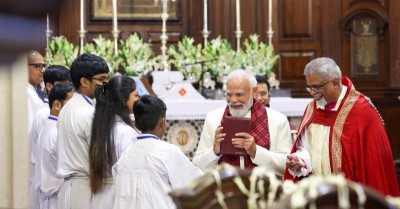 Sri Lankan Crisis
Sri Lankan Crisis
After ensnaring Sri Lanka in a debt trap, China turns a blind eye as the country’s economic woes turn critical
Sri Lanka is confronting its worst economic crisis in decades, with economists saying that its public debt has reached unsustainable levels.
In early March, the International Monetary Fund (IMF) called for urgent reforms in the island nation’s economy, even as it continued to reel under a severe foreign exchange crisis with falling reserves and a government unable to foot the bill for essential imports.
Severe shortages of essentials like food, medicine, milk powder, cooking gas and fuel are rampant, and people are forced to wait in long queues to get petrol and diesel. The country’s Central Bank allowed the local currency to free float earlier this month, causing a sharp increase in prices.
Lengthy power cuts have now become a daily phenomenon. While the serial bomb blast across Colombo on the Easter of 2019, the COVID-19 pandemic, and the war in Ukraine have exacerbated Sri Lanka’s economic difficulties, the real roots of the problem long predate these catastrophes.
In effect, these roots took shape even before the Chinese debt trap became an unpleasant reality for the emerald island.
According to World Bank estimates, over half a million Sri Lankans have already fallen below the poverty line since the pandemic struck.
The bank described this as a “huge setback equivalent to five years’ worth of progress”.
The Sri Lankan government had declared an economic emergency in 2021 in view of rising food prices, a depreciating currency, and rapidly depleting forex reserves.
The Sri Lankan economy depends on imports for a wide range of essential items.
The situation reached the stage where President Gotabaya Rajapaksa felt compelled to call in the army to manage the crisis by rationing the supply of various essential goods.
Earlier this month, the government limited imports of 367 non-essential items, including fish, footwear and wine.
With forex reserves dropping from over $7.5 billion when Rajapaksa became the President in 2019 to around $2.8 billion in July 2021, and further to $1.58 billion in November 2021, the direct impact was felt by the people as the value of the Sri Lankan rupee depreciated.
According to a Bloomberg report, the situation only got worse after Russia invaded Ukraine, with the price of petroleum having increased by 88% since last year.
This led to large anti-government protests across the country, with thousands gathering on the main Galle Road in Colombo earlier this month and some even entering the President’s office.
The demonstrators accused the government of mismanaging the economy and consequently forcing the public to bear the brunt of the acute scarcity of essential commodities and the fuel shortages. They demand the resignation of Rajapaksa.
The scale of the problem confronting Sri Lanka is evident from the fact that the government has had to cancel school examinations scheduled over the past weekend due to an acute shortage of printing paper. Also, Sri Lanka’s only fuel refinery ran out of crude oil in November 2021.
Meanwhile, Reuters reported that nearly 1,000 bakeries across the country had to shut down due to the unavailability of cooking gas.
A major problem that the country is facing is its huge foreign debt burden, and it owes over $5 billion to China alone.
Sri Lanka’s foreign reserves are shrinking partly because of construction projects built with Chinese loans that are not making money. Its dollar-denominated debt repayments due this year total more than $6 billion, including a sovereign bond of $1 billion maturing in July.
There is growing concern among rating agencies and economists that the country would not be able to pay even this.
A report in The Financial Express pointed out that “Amid its balance of payment crisis, global rating agencies such as Moody’s, S&P and Fitch have all downgraded Sri Lanka’s sovereign ratings.
In January, S&P Global Ratings cut Sri Lanka’s sovereign credit rating deeper into ‘junk’ territory, to ‘CCC’ with a negative outlook, citing rising repayment pressures and ‘uneven access’ to financing.
Last year both Fitch and Moody’s downgraded Sri Lanka’s sovereign ratings to junk category on increased probability of a default event in coming months.
Fitch said it downgraded Sri Lanka in the light of Sri Lanka’s worsening external liquidity position, underscored by a drop in foreign-exchange reserves set against high external debt payments and limited financing inflows, while Moody’s said last year the country had failed to come up with a comprehensive debt repayment plan”.
The shortages of essential items such as food, medicines and fuel is forcing poor Sri Lankans, especially daily wagers, to flee the country. On 22 March, 16 Sri Lankan nationals, all Tamils from the northern part of the island nation, reached the Indian state of Tamil Nadu in two batches.
As per media reports, they parted with their limited savings to pay for a boat ride to Indian shores. Separated from northern Sri Lanka by only a few miles of sea, Tamil Nadu shares strong filial, ethnic, linguistic, and cultural connections with northern Sri Lanka.
The Indian Express reported that this current trickle to India from the northern Tamil-dominated regions of Sri Lanka may just be the beginning.
It added that “Intelligence officers in Tamil Nadu have obtained information that ‘around 2,000 refugees’ are likely to arrive in the coming weeks”.
The report quoted Mannar-based activist V. S. Sivakaran as saying that “Many people whom I know are planning to leave Sri Lanka, some have relatives in Indian camps, some have contacts in Tamil Nadu. There is panic and anxiety about tomorrow”.
A similar exodus had taken place during the peak of the Sri Lankan civil war in 1989. Suresh Premachandran, who heads the political outfit Eelam People’s Revolutionary Liberation Front (EPRLF), said that the working class was facing the heat, and that “Construction workers and daily wagers are struggling due to inflation across the country. Given the previous exodus, people in Mannar and Jaffna may be looking for ways to reach India. It may be the beginning. More people are likely to leave the country unless the economy stabilizes”.
The economic crisis in Sri Lanka today traces its origins to a time way before the pandemic broke, the war in Ukraine began, or even the predatory tactics started being employed by China.
As Dushni Weerakoon, executive director at the Institute of Policy Studies of Sri Lanka explained to CNBC, successive governments since 2007 have issued sovereign bonds “without giving much thought to how we will repay the loans.
Reserves were built up by borrowing foreign currency funds, rather than through higher earnings from exports of goods and services. This left Sri Lanka highly exposed to external shocks”.
Alex Holmes, Asia economist at Capital Economics, added that the government spent the foreign currency on repaying the debt and the Central Bank has been running down foreign exchange reserves to prop up the Sri Lankan rupee, which came under pressure.
As a result, “there’s not much foreign currency left in the economy to do things like import food, which is one of the reasons why we’ve seen inflation rise to double digits”.
These existing problems were compounded during COVID-19. Shahana Murkherjee, an economist at Moody’s Analytics, pointed out that the pandemic severely impacted Sri Lanka’s tourism-dependent economy and aggravated its debt burden.
She added that “Migrant worker remittances have also suffered a major setback”, and that the tax cuts introduced in 2019 made the situation worse as it led to a significant drop in tax revenue and further weakened the government’s hand to support the economy during the COVID crisis.
Sri Lanka has so far relied on loans from countries such as China, India, and Japan, and institutions such as the Asian Development Bank and the World Bank.
Though rating agencies as well as experts have suggested that the way out for Sri Lanka was to seek debt restructuring from the IMF, the country has so far refused to do so as it has been loath to accept IMF directives on increasing income tax and having an independent Central Bank.
However, given the gravity of the problem confronting the country, this position has changed somewhat. Sri Lanka said last week that it would work with the IMF to take action to increase its foreign exchange reserves.
India, which stands to be directly impacted by the fallout of the economic crisis in Sri Lanka, has made a serious effort to bail out its beleaguered neighbour. Since January, it has helped Sri Lanka with $2.4 billion, including a $400-million currency swap and a $500-million loan deferment.
On 17 March, Sri Lanka signed a $1-billion credit line with India for the procurement of food, medicines, and other essential items.
After the agreement to extend the line of credit was inked, the spokesperson of India’s Ministry of External Affairs (MEA) said that India had always stood with the people of Sri Lanka and would continue to extend all possible support to the country.
China, however, refused to respond to Sri Lanka’s appeal to reschedule its huge debts, and its Ambassador to Sri Lanka said on 21 March that his country was more keen on considering a further $1 billion loan and $1.5 billion credit line. Whether the Chinese strategy of offering more loans to the already heavily indebted Sri Lanka, in all probability under very stringent conditions as evidenced in recent years, is what Colombo needs at the moment is something that Rajapaksa and his team would need to consider extremely carefully.
As a recent report in the Hong Kong Post put it, the end result of reckless borrowing from China to finance unprofitable infrastructure projects was what had contributed to putting Sri Lanka in this unenviable position to begin with.
The report added that "China has shed some crocodile tears over the economy of Sri Lanka getting caught in a quagmire after hobnobbing with the BRI projects of China, record inflation, soaring food prices and the sufferings of the people.
The key concern, however, is how such a negative situation would impact the attitude of Colombo towards borrowings from China, and what it would mean for the ultimate relations between China and Sri Lanka”.
At a broader level, the Sri Lankan experience is also one that other countries that are being lured in by deceptively easy Chinese blood money, Pakistan, Myanmar, and Nepal being a few regional cases in point, need to look much more closely and diligently at.
Support Our Journalism
We cannot do without you.. your contribution supports unbiased journalism
IBNS is not driven by any ism- not wokeism, not racism, not skewed secularism, not hyper right-wing or left liberal ideals, nor by any hardline religious beliefs or hyper nationalism. We want to serve you good old objective news, as they are. We do not judge or preach. We let people decide for themselves. We only try to present factual and well-sourced news.







